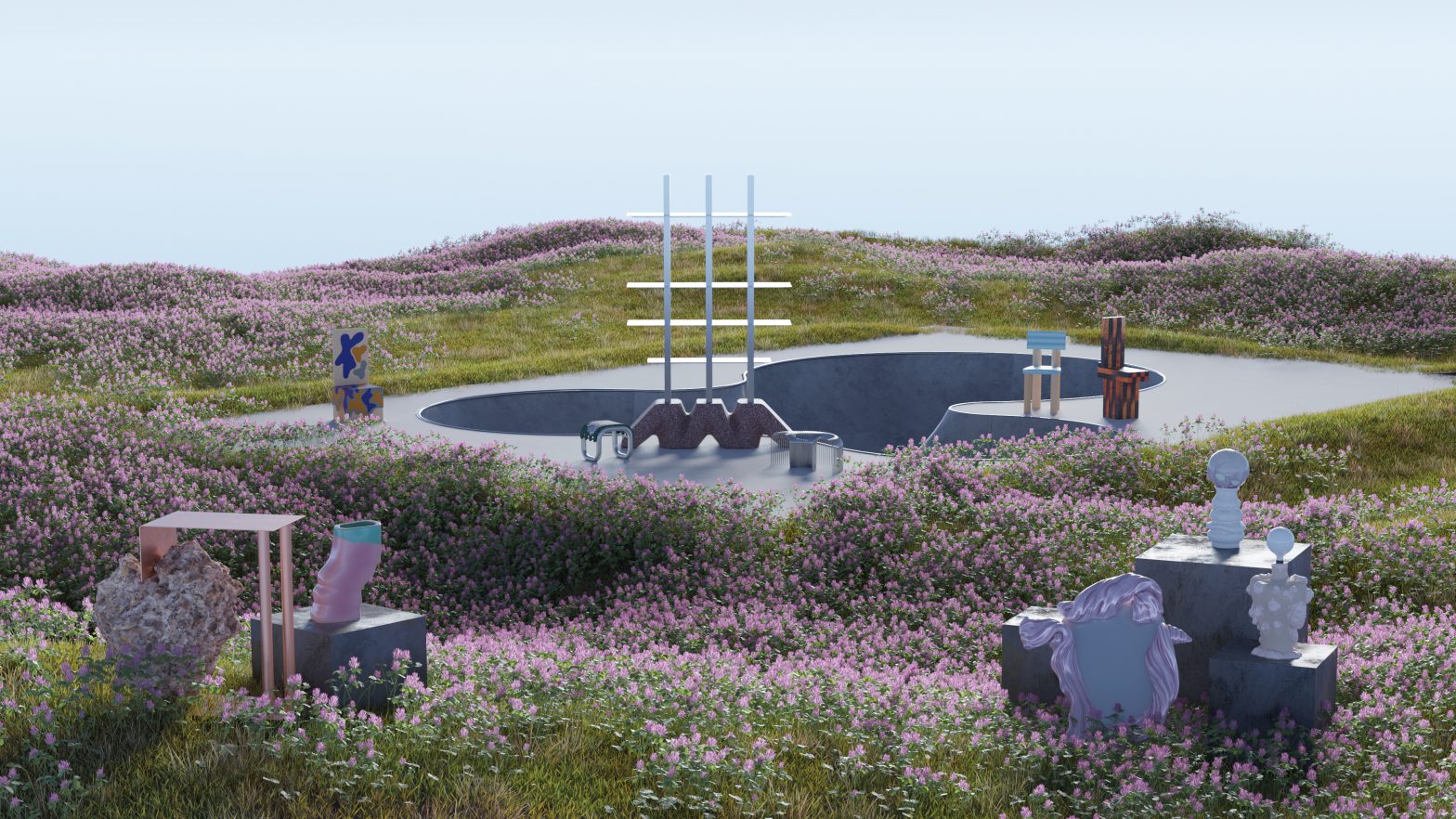Swedish Design, and more broadly Scandinavian Design, has historically been known for its minimalism. Think of Gunnar Nylund’s highly polished ceramics with their simple forms, Greta Magnusson-Grossman’s delicate metal lamps, or Axel Einar Hjorth’s naked wooden chairs and tables. The new wave of Swedish designers, taking cues from larger trends in Europe and abroad, have nurtured their own brand of maximalism. Blending the country’s traditional handverk (or, handicrafts) – such as glass blowing, textile development, and woodworking – with new techniques and materials, the ten designers presented in “Maximalist 180°” demonstrate the wide variety of furniture and decorative objects coming out of Sweden now.
Read our interview with curator Stephen Markos on Adorno Editorial.
Maximalist 180º
Curated by Stephen Markos
RYA
by Lars Oscar Wall
The “RYA” stool is made out of beechwood and hand-tufted wool. To complement the stool, there is a wall-mounted backrest that moonlights as a wall-hung work of art when the stool has wandered off the help out somewhere else.
No Mirror
by Maria Bang Espersen
“No Mirror” is made of steel and glass that has been stretched and folded multiple times. It is an approach to hot glass that Maria Bang Espersen has continued to explore since 2011. Like the glass itself mimics multiple other materials, “No Mirror” likewise does nothing more than resemble a mirror: One can never find one’s own reflection in it.
Blob Lamp
by Lisa Ericson
Handmade table-lamp with a structure made of ceramics and crumbling glaze. The top is made from mouth-blown glass in purple and gren with an LED light inside.
BBQ Chair
by LAB LA BLA
The BBQ series treats low-end industrial spruce like an expensive piece of meat. This 45×45 lumber is colored by marinating, rubbing, and massaging each piece in a delicious blend of mining waste and factory floor dust sourced from modern and medieval iron ore and copper mines in Sweden. Pieces are then joined together by a pine resin extracted from paper pulp waste. Spruce is an abundant resource, but is seldom used for furniture making due to its softness. To preserve and seal the surface, the objects have been finished off with glaze upon glaze of boat lacquer.
Seats System
by Josefin Zachrisson & Mira Bergh
Seats System is a furniture collection whose repetitive construction, durable material choice, and social focus lay a foundation for frequent usage as well as timeless design. With an ability to orchestrate shadow plays and pieces with no dedicated front or back, Seats System is intended to bring a sense of flow to its surroundings. All pieces in the system are modular and can be integrated with each other, to meet the functional and aesthetic needs of a certain space – which brings the consumer’s creativity to life.
DIO
by Gustav Winsth
The “DIO” shelf is the result of an exploration of sneaker aesthetics with regard to shapes, materials, and the underlying subcultures that make its foundation. The wild and intrepid aesthetic of sneakers gives rise to thoughts about volume, color. and material which, when applied to an item of furniture, fall into the expressive category that designer Gustav Winsth considers essential if one is to create a stimulating and personal home environment.
Frame Shaming Chair
by Sofie Wallenius
The “Frame Shaming” furniture is between unbalanced and balanced, between classic and non-classic. It is something that is familiar but, at the same time, makes us react. The “Frame Shaming” collection is a comment to the patriarchal structure which has given us unattainable goals that are doomed for us to fail. The sturdy legs make the chair steady and it certainly takes its place in every room it enters. The shiny blue fabric gives it elegance, while the wavy backrest gives you comfortable support on a lazy day.
Pink Pearl Lamp
by Julia Olanders
Deriving from the toxic and filthy building site, the “Pink Pearl” Lamp appears as a bust of our civilisations’ building and rebuilding. It is made out of jesmonite, spray foam insulation, spray paint, and UV-repellent lacquer. Letting the materials take a stance in the center of the room, instead of hiding in walls and constructions as merely functional structures, makes us rethink what we find beautiful or ugly.
Shifting Shape
by Jonatan Nilsson
Designer Jonatan Nilsson’s ambition with the “Shifting Shape” project was to create a flexible mold for glassblowing. He likes the distinct shapes that you can get with mold-blown glass, and wanted to create a method where you don’t have to go through the time consuming and expensive process of making a completely new mold in order to obtain a new shape. Nilsson ended up designing a machine constructed in sheet metal in which you can fasten different shapes of wood.
Död Mark
by Elias Båth
“Död Mark” is a side table made of slag and copper from the Falun copper mine in Sweden. This table is a diagram of a material’s lifecycle, from extraction to residual material. A material that has shaped welfare such as world wars, environment, and geography. The finished product, in balance with the waste it creates, exposes the material’s origin and history.
Fringefloss
by Andrea Santivanez
The “Fringefloss Stool” is a stainless steel stool that can be used with its tailored seat cushion (“Fringefloss”) that was translated from a traditional and extinct carpet in Southern Sweden.

